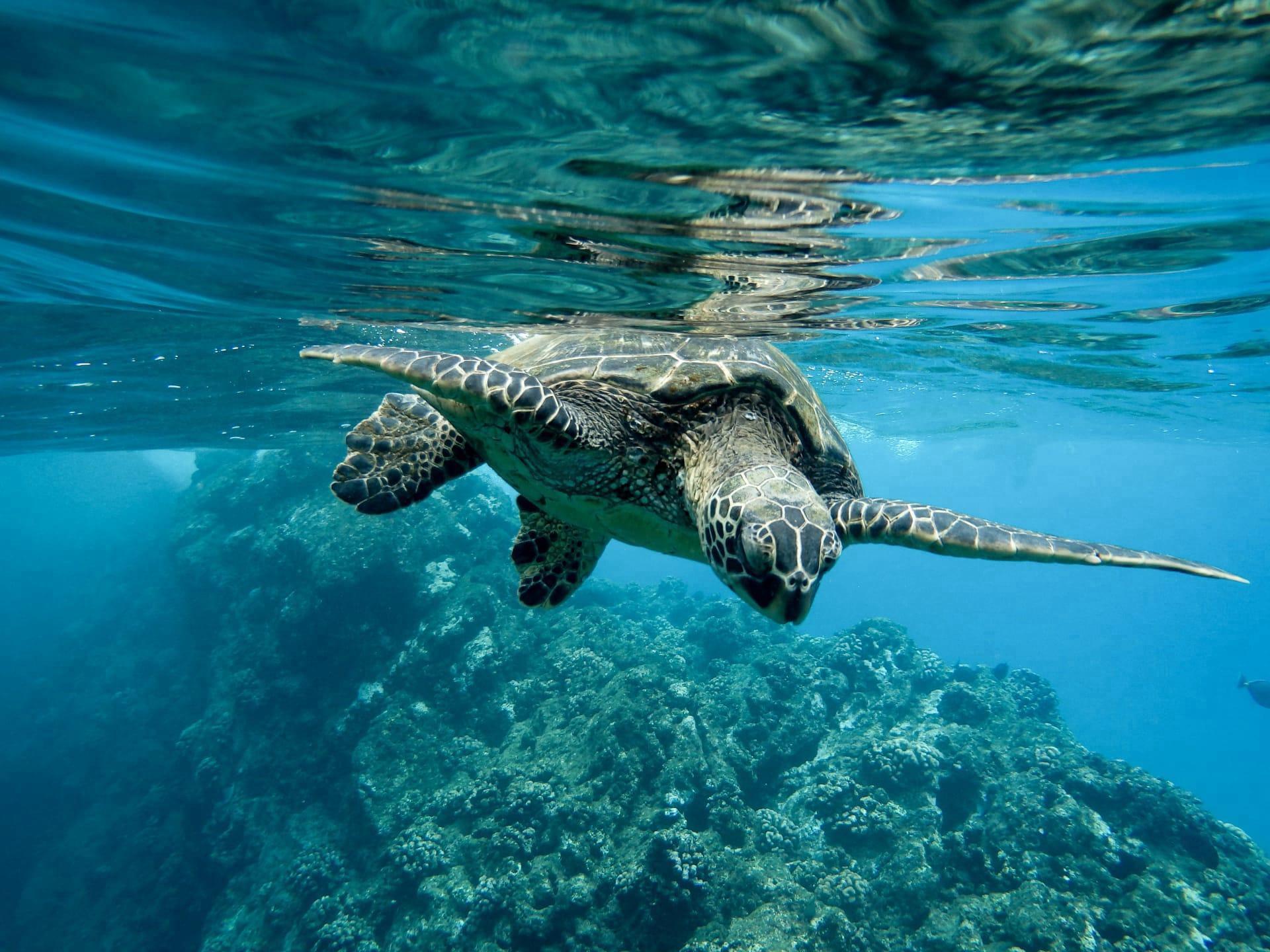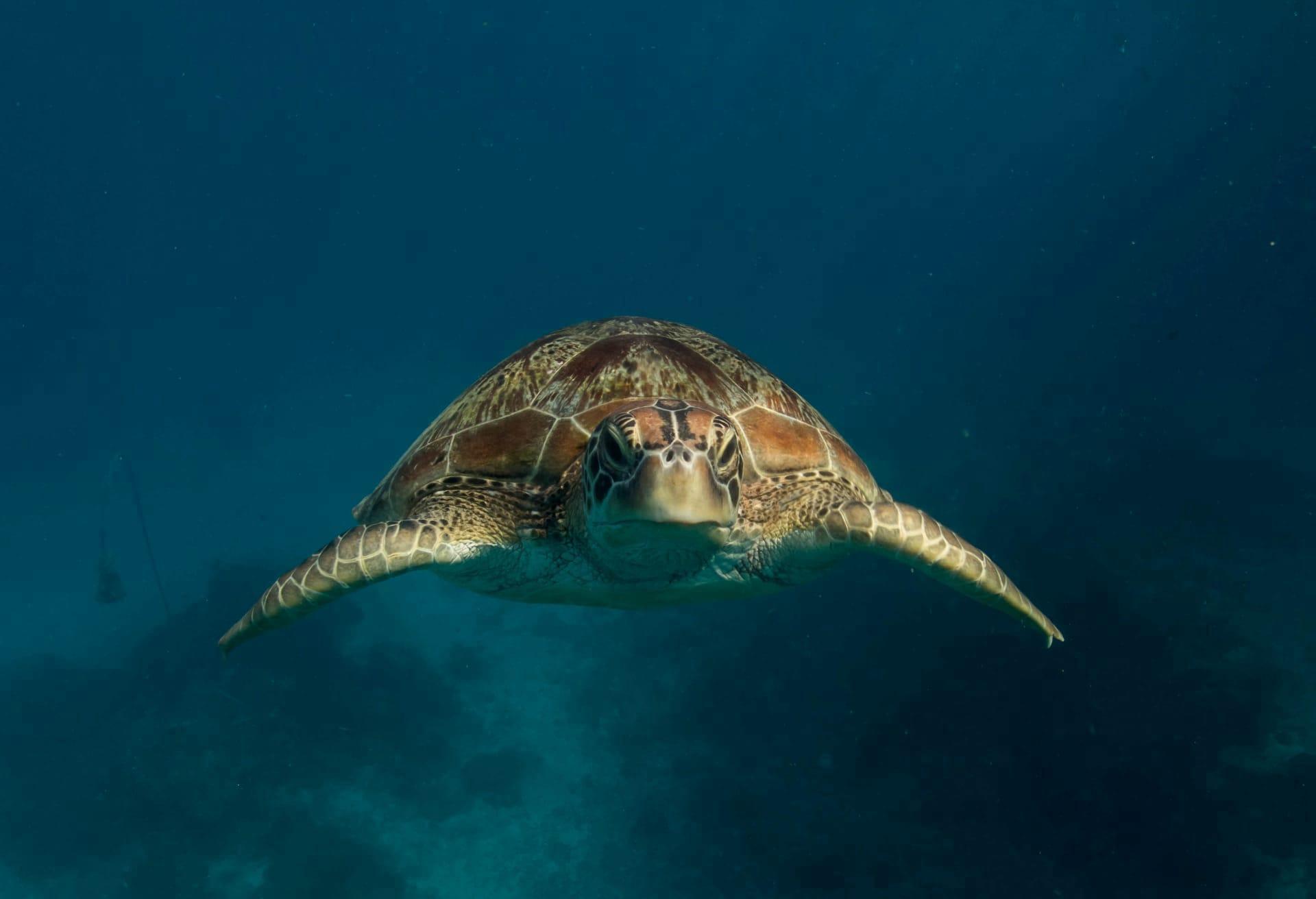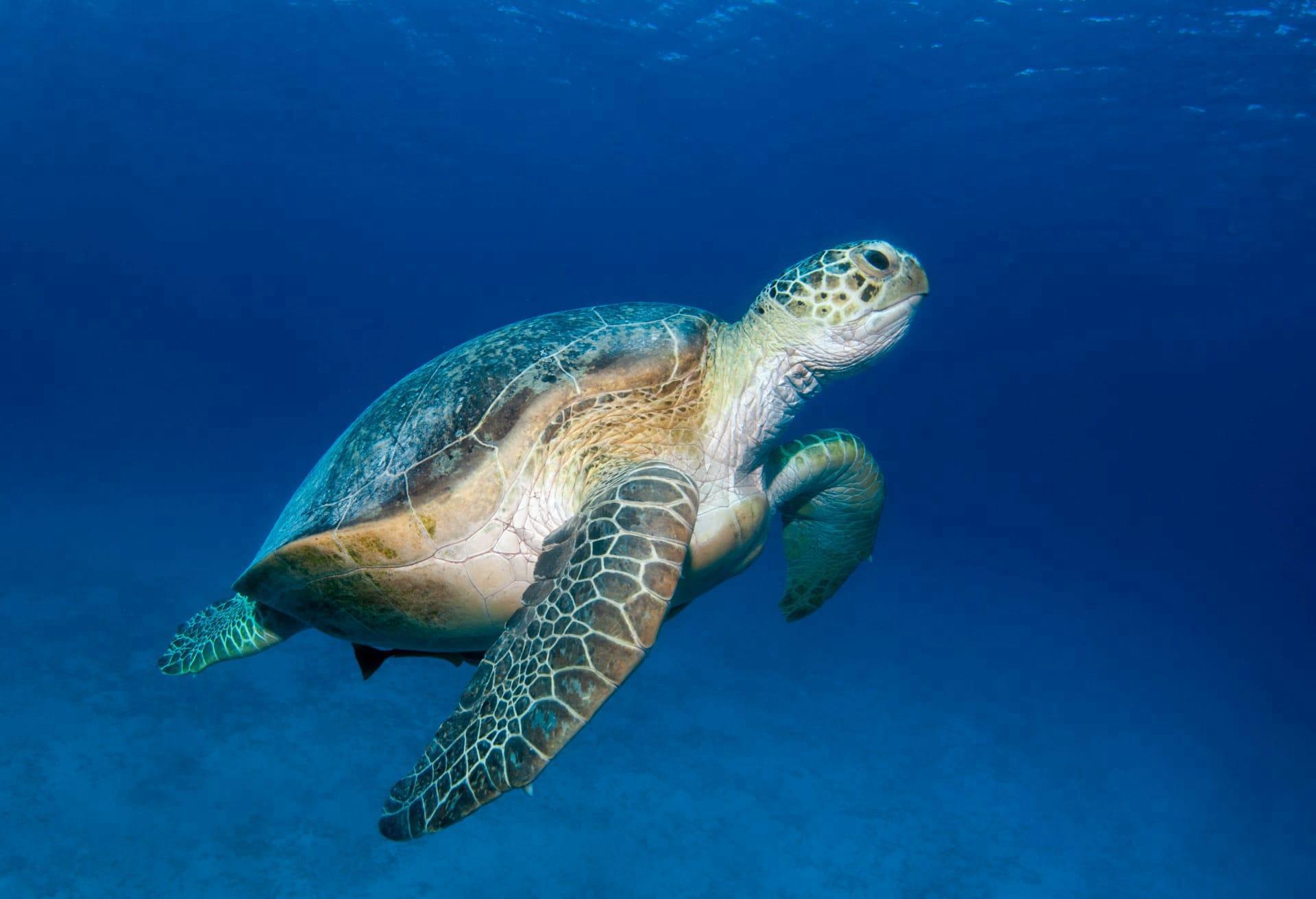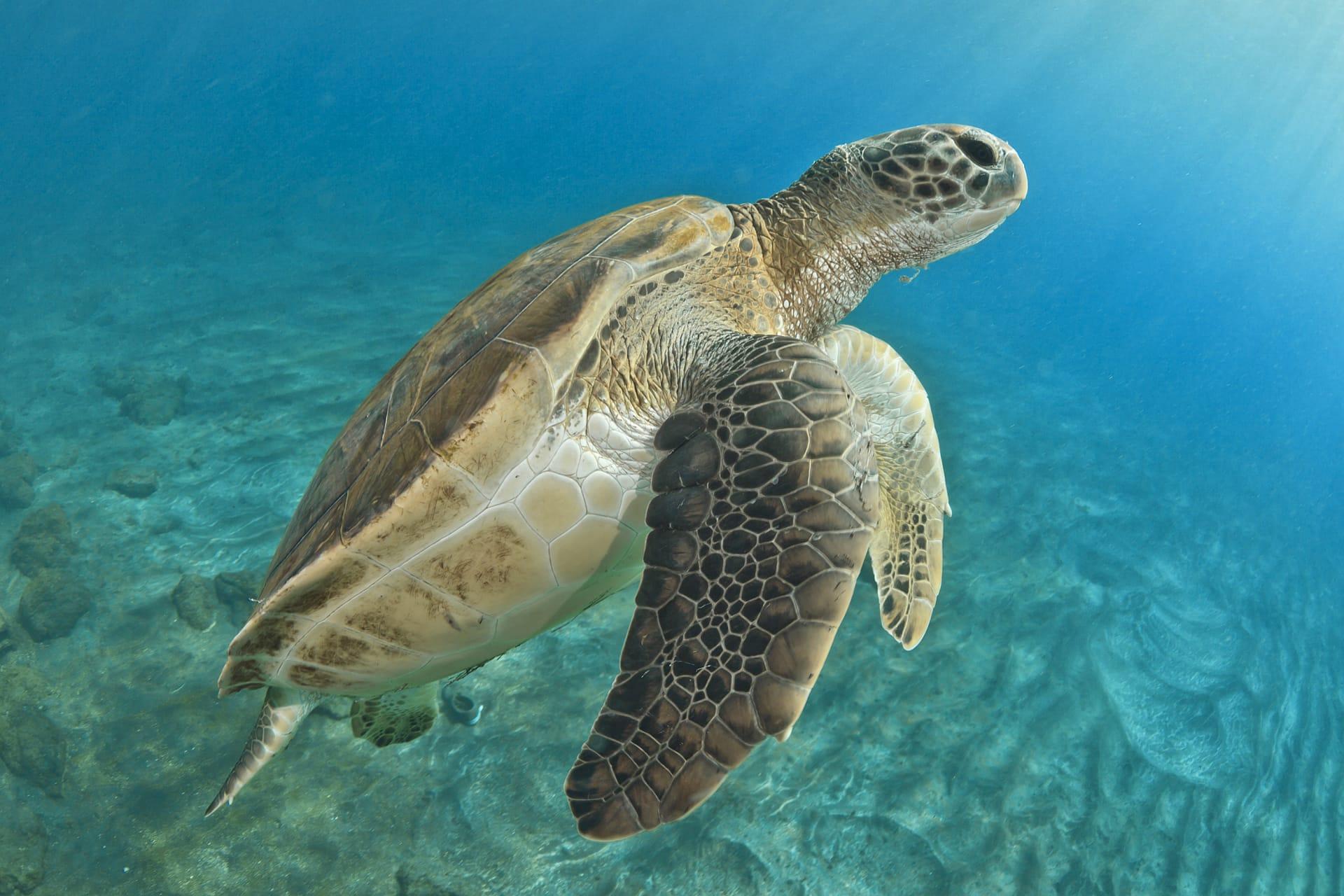Green Sea Turtle Trivia
- Home /
- Trivia Question /
- Animal /
- Green Sea Turtle Trivia
1
Question: What distinguishes the green sea turtle from other sea turtle species?
Answer: The green sea turtle is unique primarily for its diet. Unlike other sea turtles that might be carnivorous or omnivorous, adult green sea turtles are mostly herbivorous, feasting on sea grasses and algae. This diet is what gives their cartilage and fat a greenish color, hence the name. They are also distinct in size, ranking as the second-largest species of sea turtle, with adults typically measuring between 3 to 4 feet in shell length and weighing 150 to 400 pounds. Their shell, or carapace, is smooth and varies in color from olive to brown, black, or gray.
Question: How long do green sea turtles live?
Answer: Green sea turtles have a notably long lifespan, which can be challenging to pinpoint precisely. However, it's estimated that they can live up to 80 years or more in the wild. This lengthy lifespan is accompanied by a slow maturity process. Green sea turtles don't reach sexual maturity until they are between 20 to 50 years old. This slow journey to adulthood contributes to their vulnerability and the impact of threats, as it takes a long time for populations to replenish.

2
Question: Do green sea turtles really cry? What's the truth behind this myth?
Answer: Yes, green sea turtles do appear to cry, but not for emotional reasons. This 'crying' is actually a process of excreting excess salt from their bodies. Unlike many animals, sea turtles do not have an efficient way to expel salt that they ingest from the ocean water. Instead, they have specialized glands near their eyes that remove salt from their bloodstream and excrete it as a salty liquid. This process often gives the appearance that the turtle is shedding tears.
Question: Is it true that the temperature of the nest determines the gender of green sea turtle hatchlings?
Answer: Absolutely! In green sea turtles, the temperature of the sand where the eggs are incubated plays a crucial role in determining the hatchlings' sex. Warmer sand temperatures generally produce more female hatchlings, while cooler temperatures tend to produce more males. The pivotal temperature for green sea turtle nests is about 85°F (29.5°C). This temperature-dependent sex determination is fascinating but also raises concerns about climate change's impact on turtle populations.

3
Question: How far can green sea turtles travel?
Answer: Green sea turtles are known for their impressive migratory journeys. They can travel vast distances between their feeding grounds and nesting sites. Some turtles have been documented traveling over 1,600 miles (about 2,575 kilometers) to reach their nesting beaches. These long-distance travels are remarkable feats, considering they often return to the exact beach where they were hatched to lay their eggs.
Question: What are the primary threats to green sea turtles?
Answer: Green sea turtles face several threats, primarily from human activities. Key threats include habitat loss due to coastal development, pollution, and climate change. Pollution, particularly plastic waste in the oceans, poses a significant risk as turtles can mistake plastic for food, leading to ingestion and potential injury or death. Additionally, climate change affects nesting beaches and sex ratios of hatchlings. Illegal poaching and bycatch in fishing gear also remain critical threats to these majestic creatures.

4
Question: How do green sea turtles contribute to their ecosystem?
Answer: Green sea turtles play a vital role in maintaining the health of marine ecosystems. By feeding on sea grasses, they act as 'lawnmowers' of the ocean, keeping the grass beds healthy and promoting their growth. Healthy sea grass beds are crucial as they provide breeding and developmental grounds for many species of fish and other marine life. This grazing also helps maintain the balance of the marine food web and supports the biodiversity of the ecosystem.
Question: Can green sea turtles live in both saltwater and freshwater?
Answer: While primarily marine animals, green sea turtles can occasionally venture into brackish waters, which are mixtures of salt and fresh water found in estuaries. However, they spend the majority of their lives in saltwater environments, including shallow coastal areas, bays, lagoons, and open seas. They are seldom found in purely freshwater environments.

5
Question: How do green sea turtles find their way back to their nesting beaches?
Answer: Green sea turtles use a combination of impressive navigational strategies to return to their natal beaches. It's believed they utilize the Earth's magnetic field as a guide, a phenomenon known as geomagnetic imprinting. This magnetic 'map' helps them navigate the vast oceans and locate the specific beach where they were born, often decades after they last visited it.
Question: What is the incubation period for green sea turtle eggs?
Answer: The incubation period for green sea turtle eggs typically ranges from about 45 to 75 days, depending on the temperature of the sand. Warmer sand can accelerate the development of the embryos, leading to a shorter incubation period. Once hatched, the tiny turtles must make the perilous journey from the nest to the sea, facing a host of predators and challenges along the way. This initial trek is critical for their survival and future development.